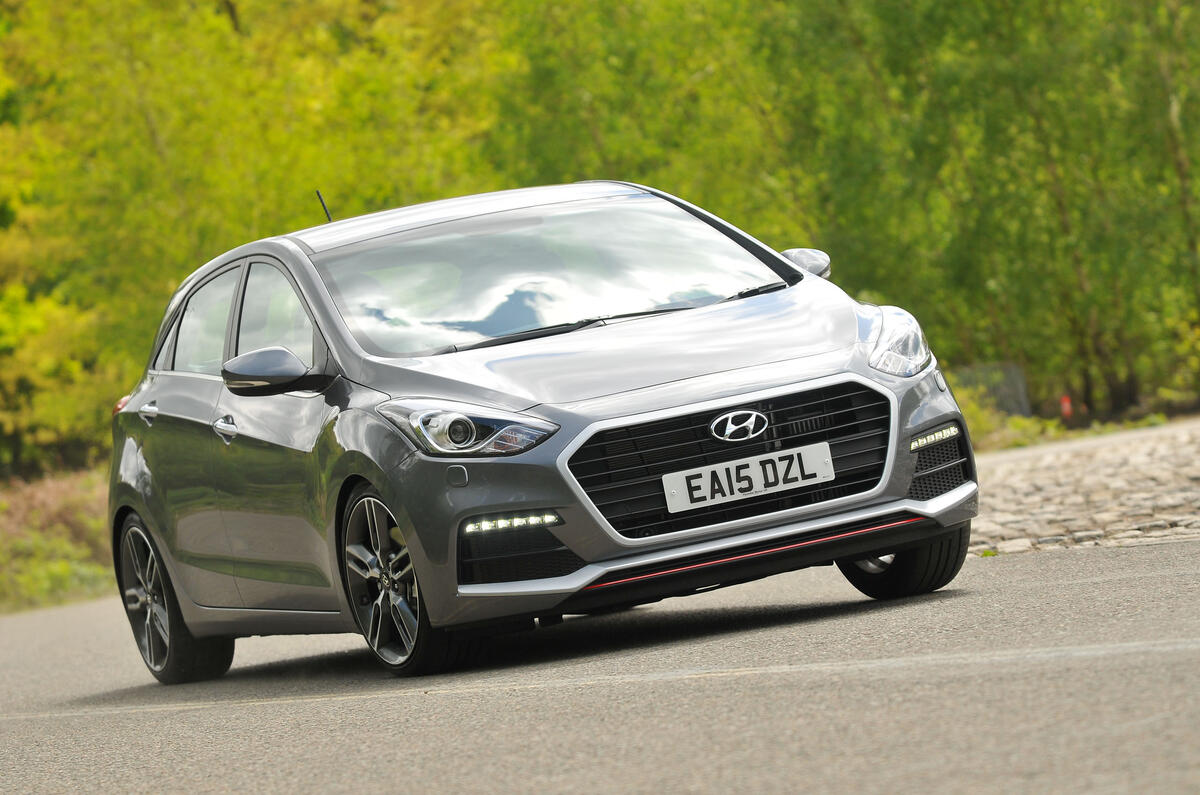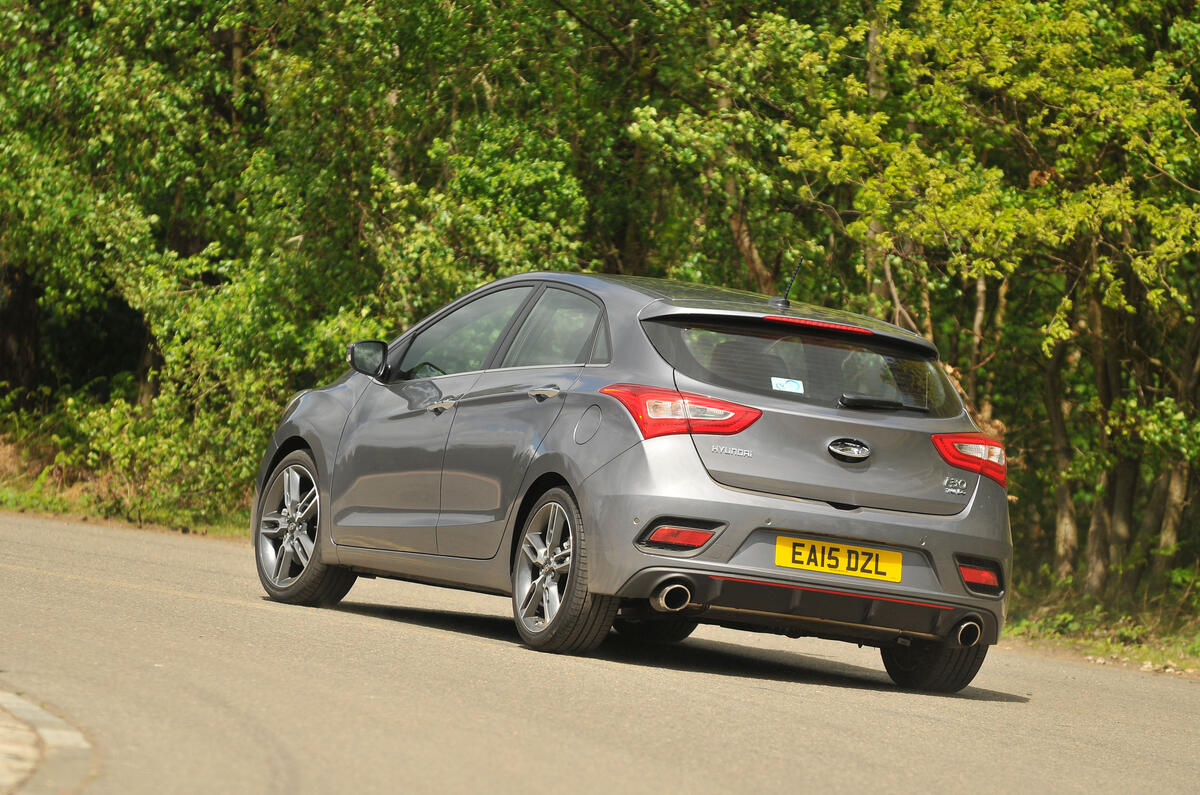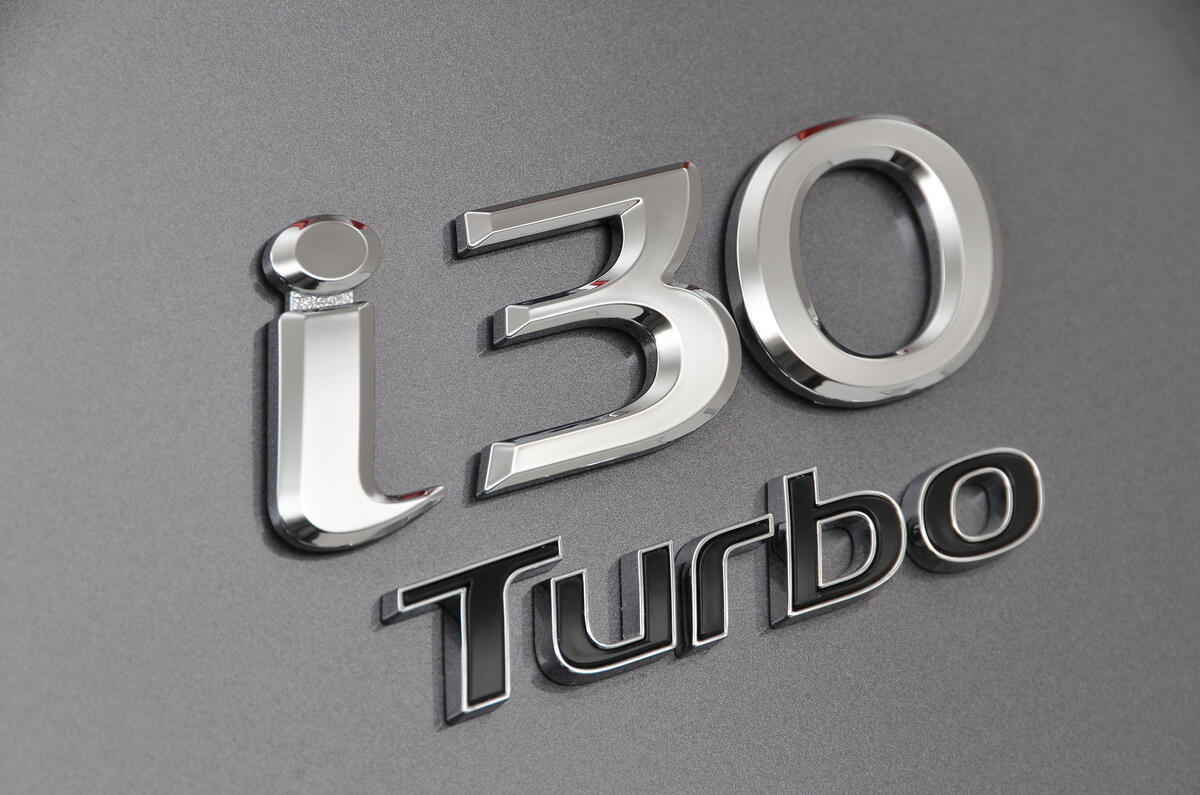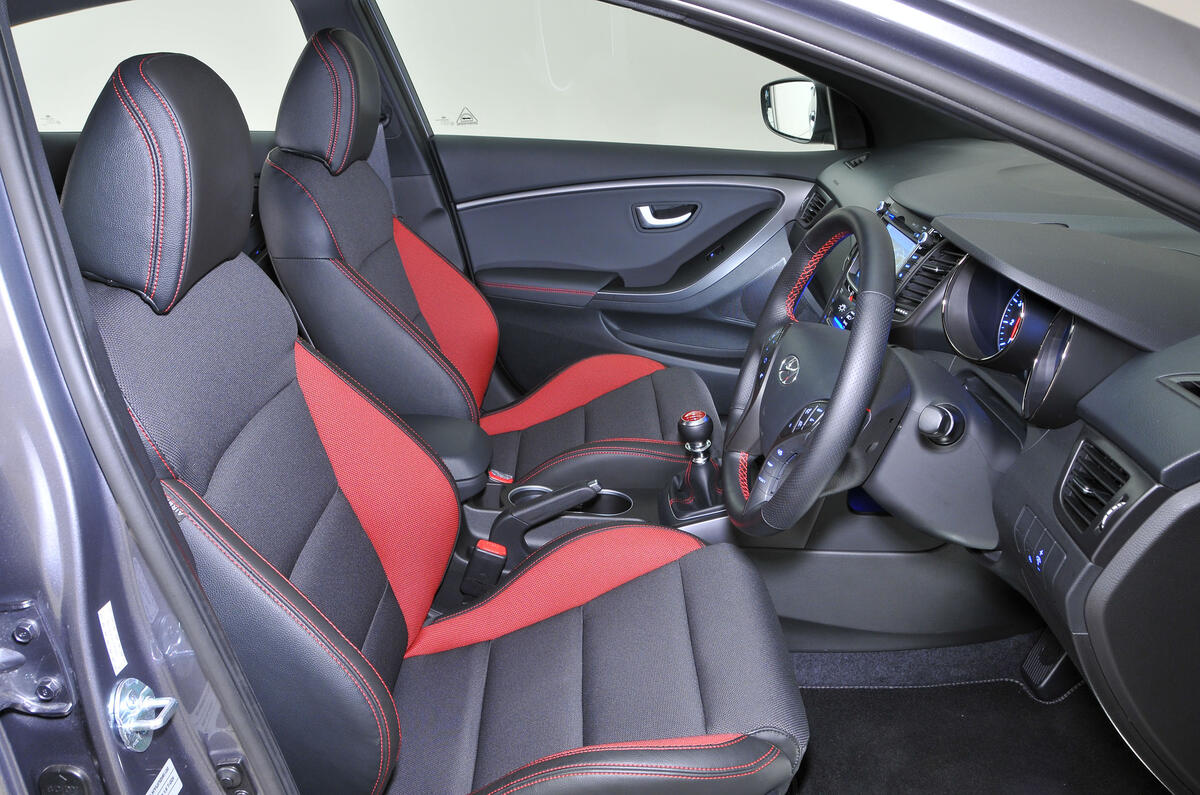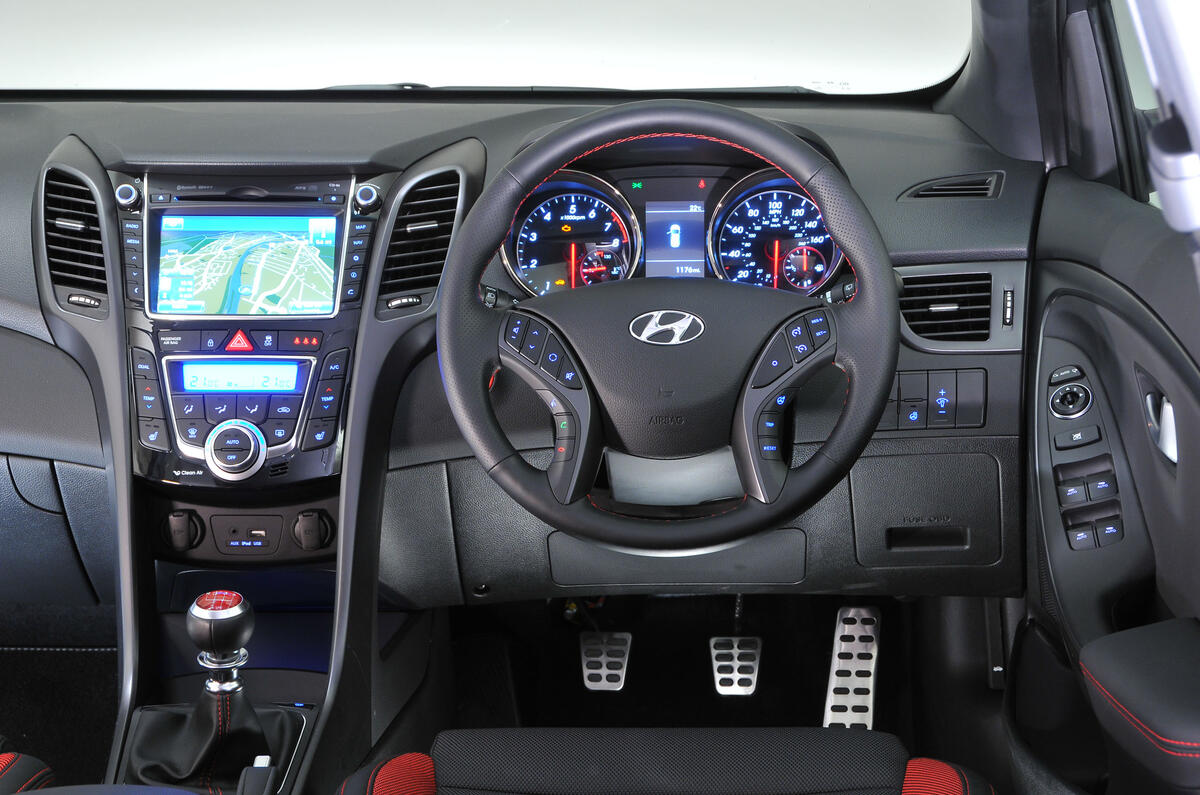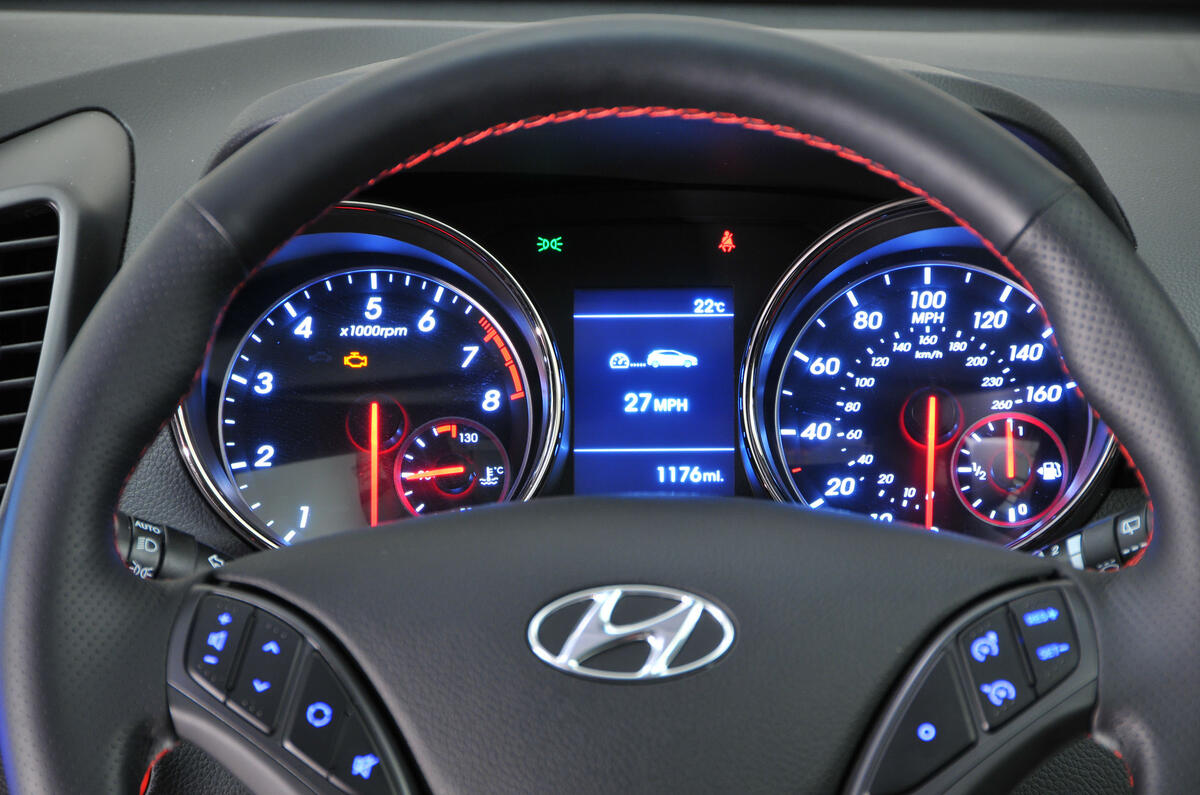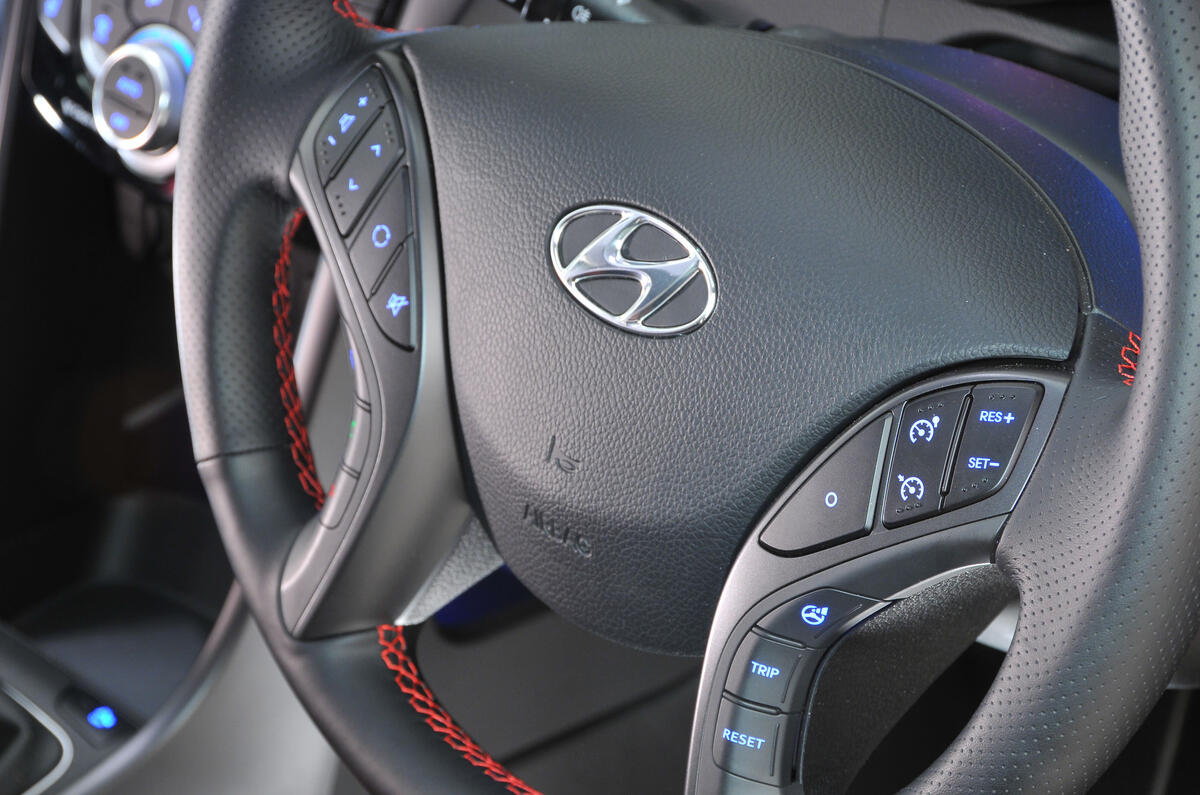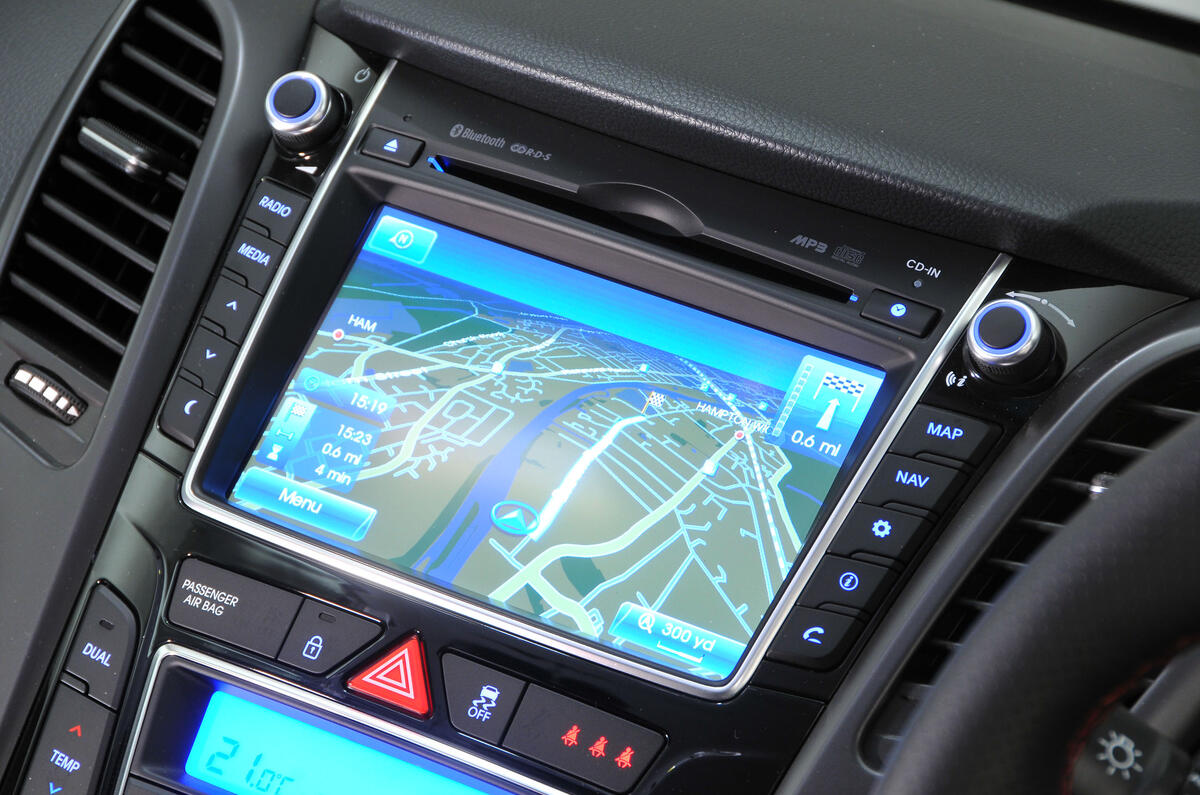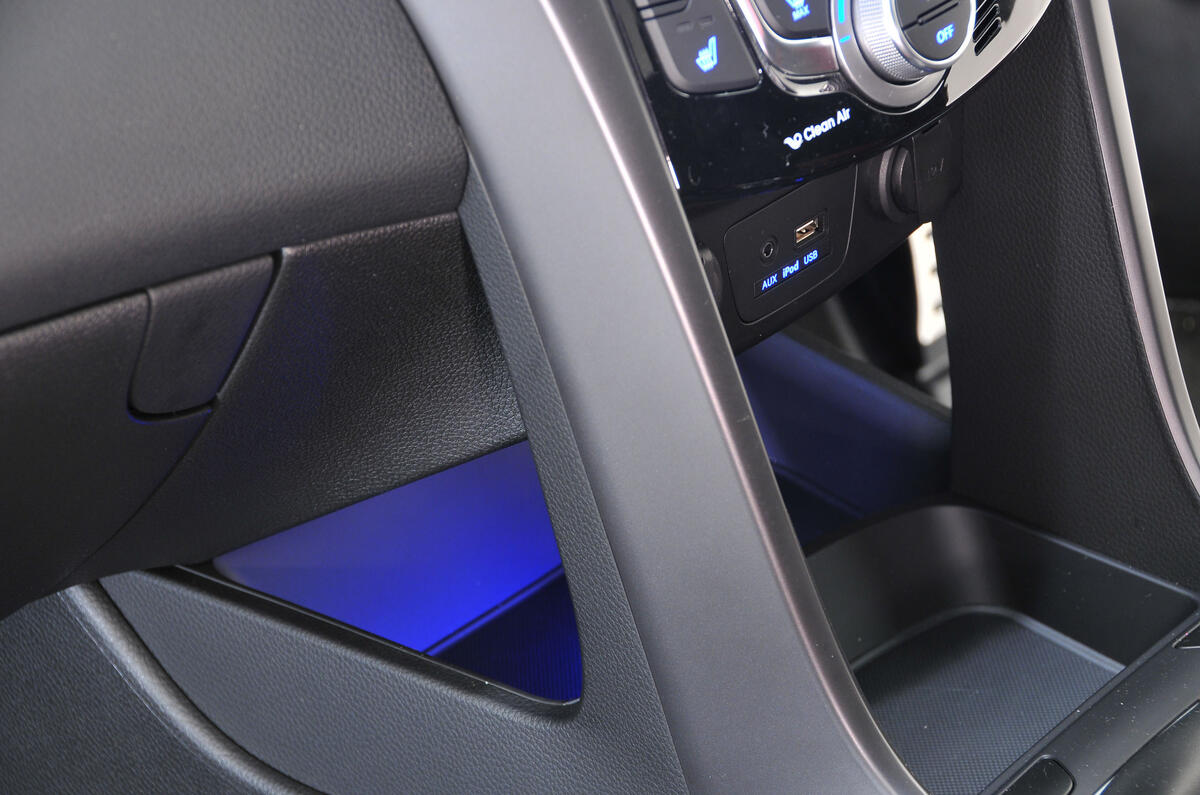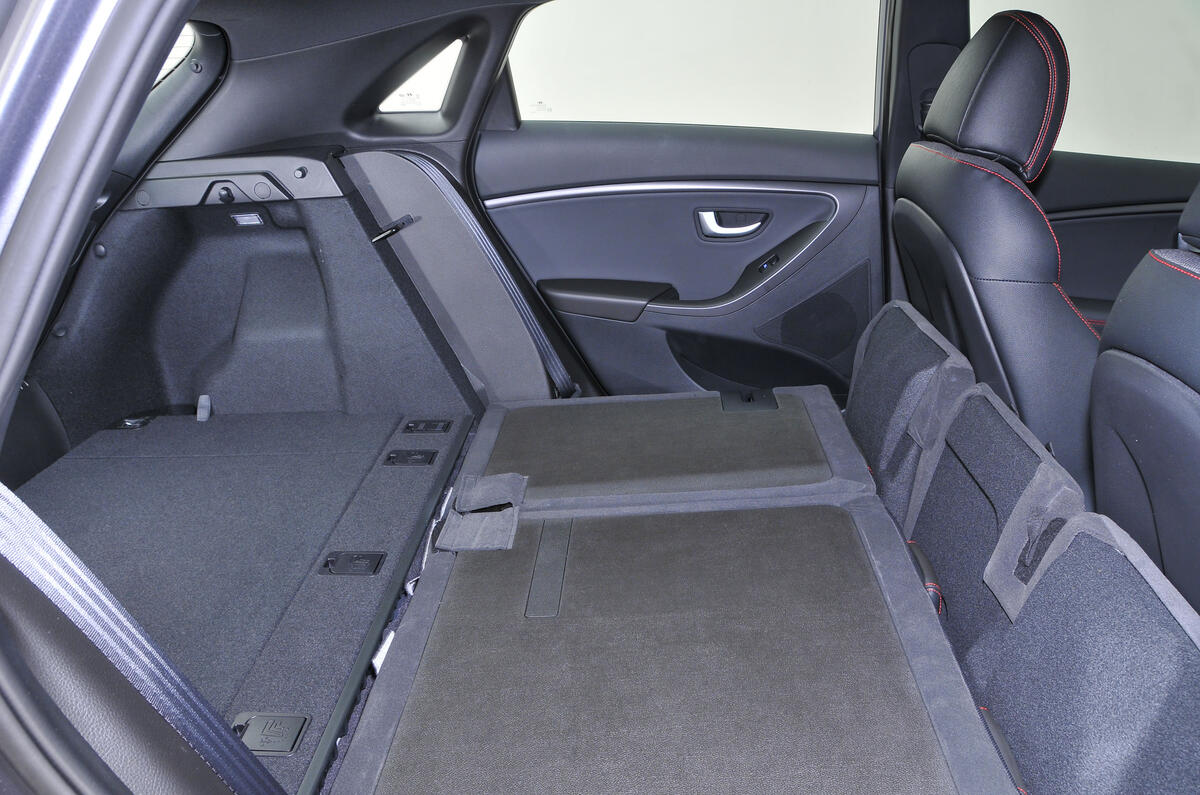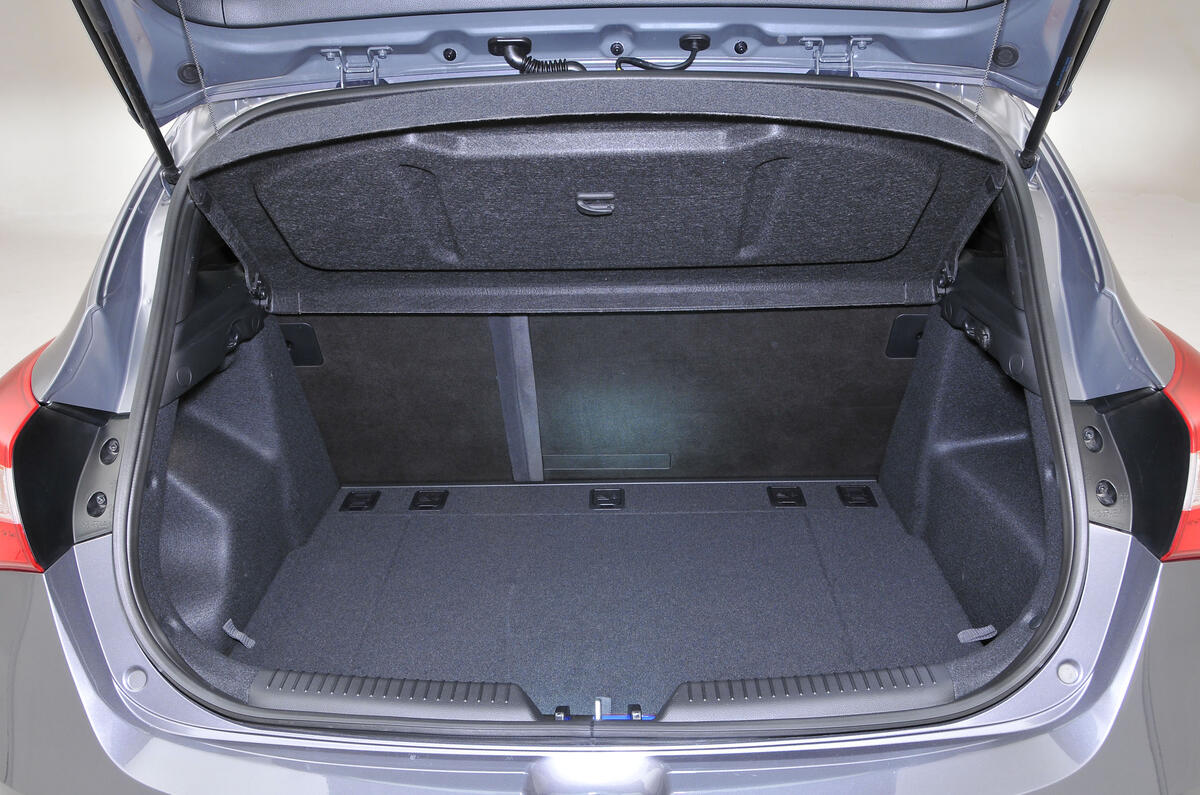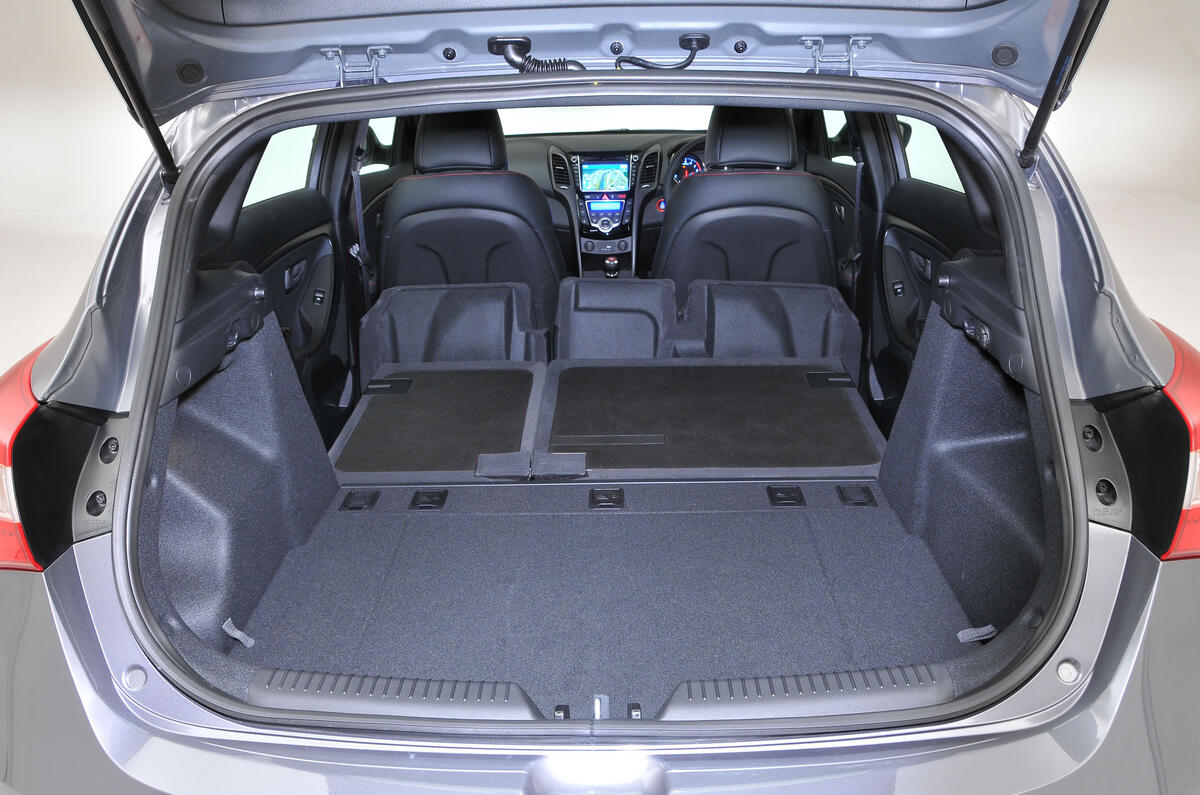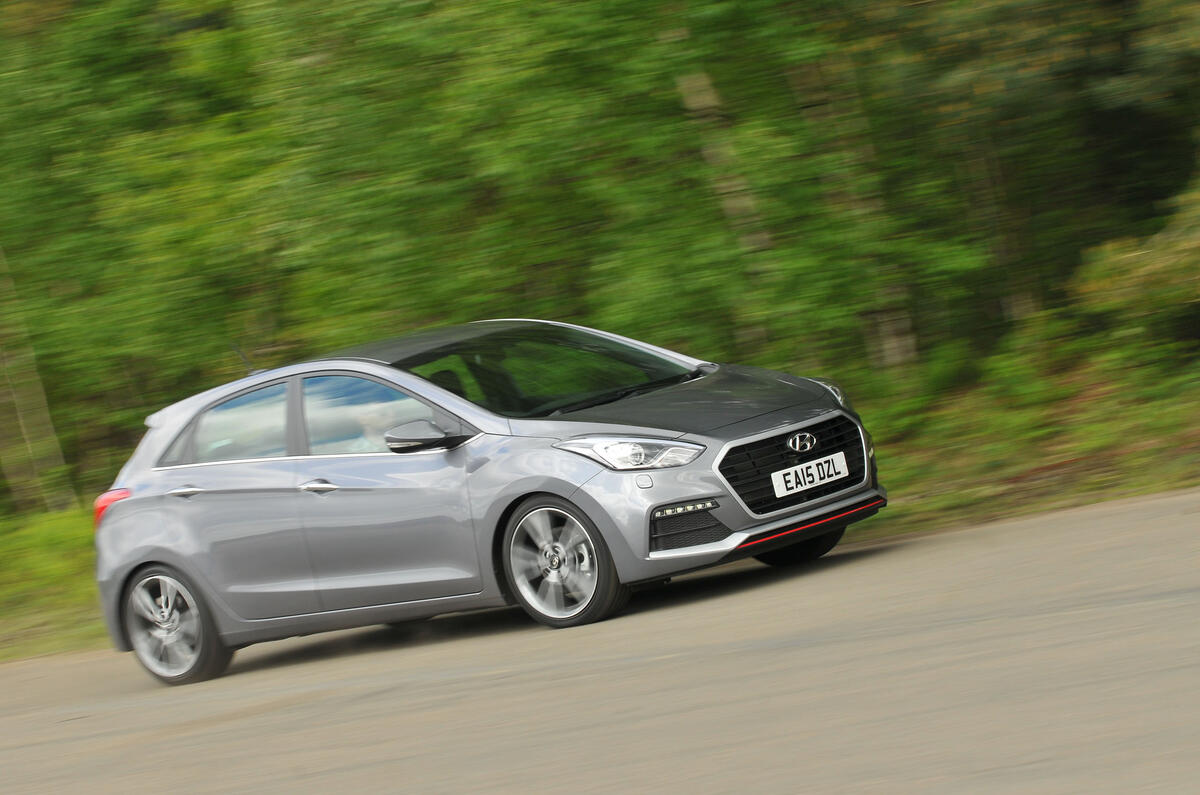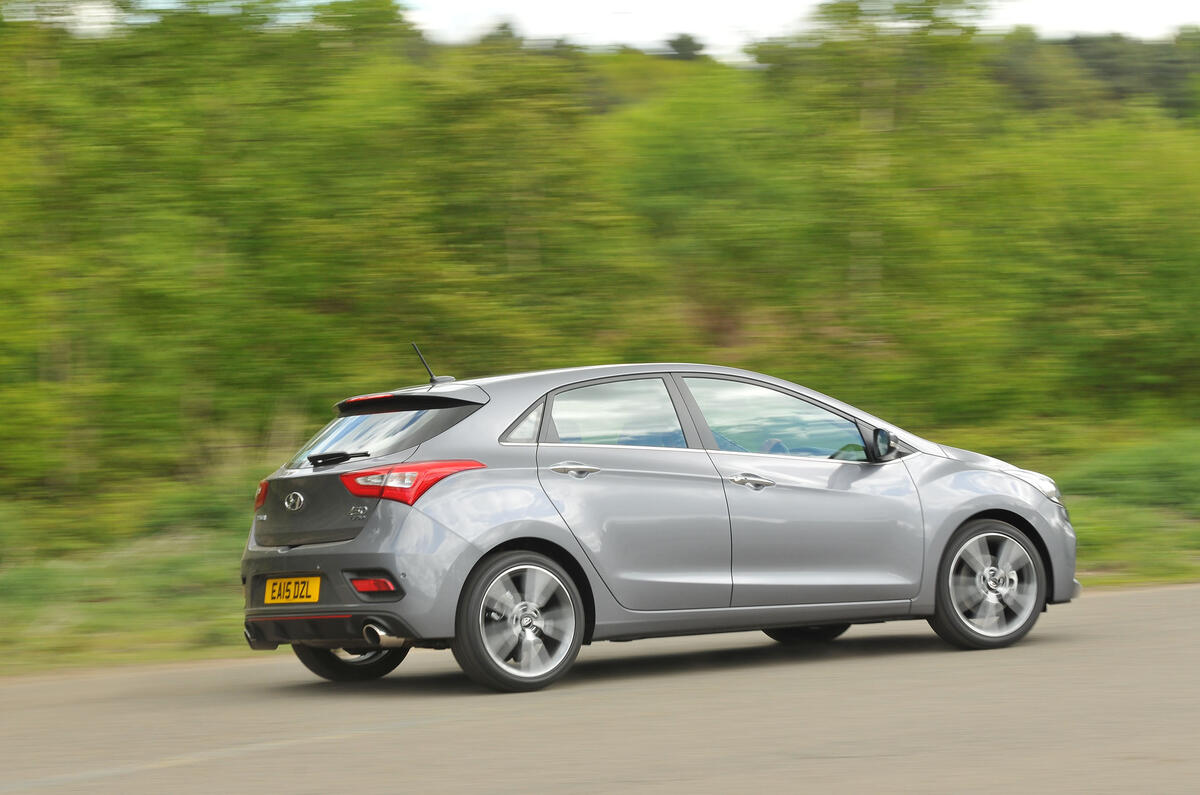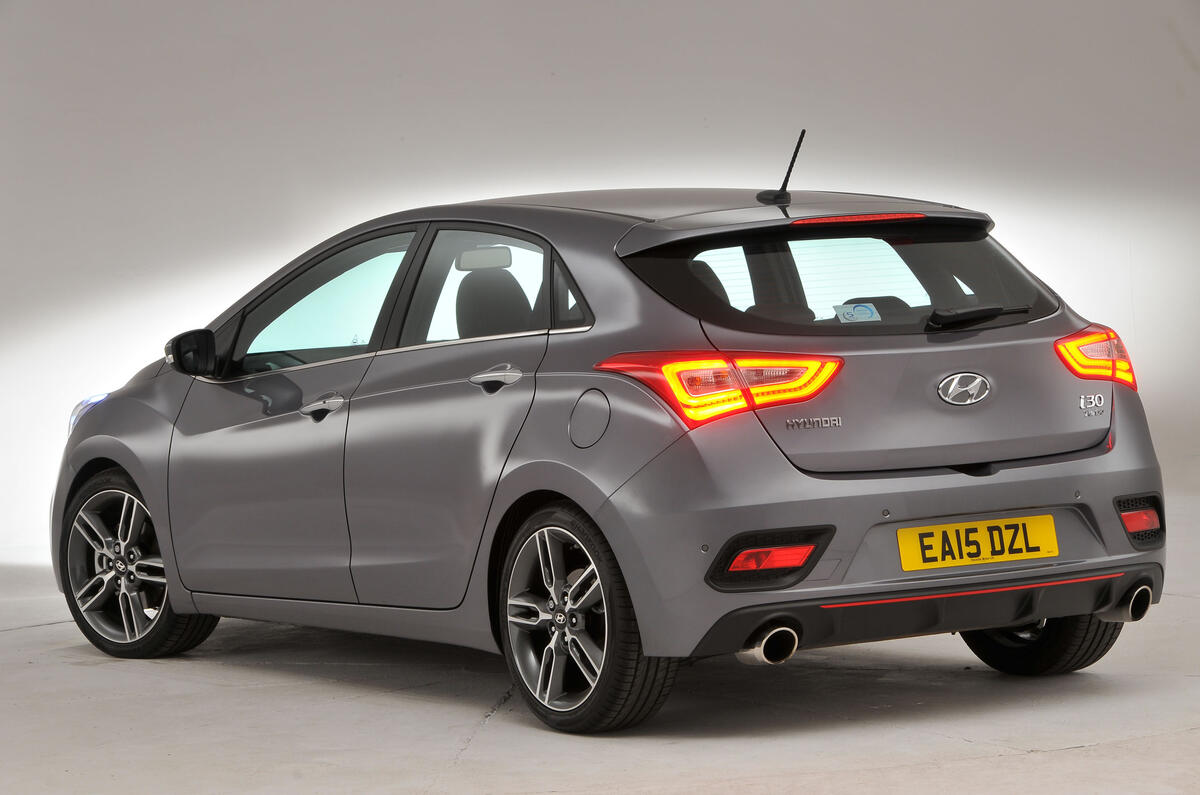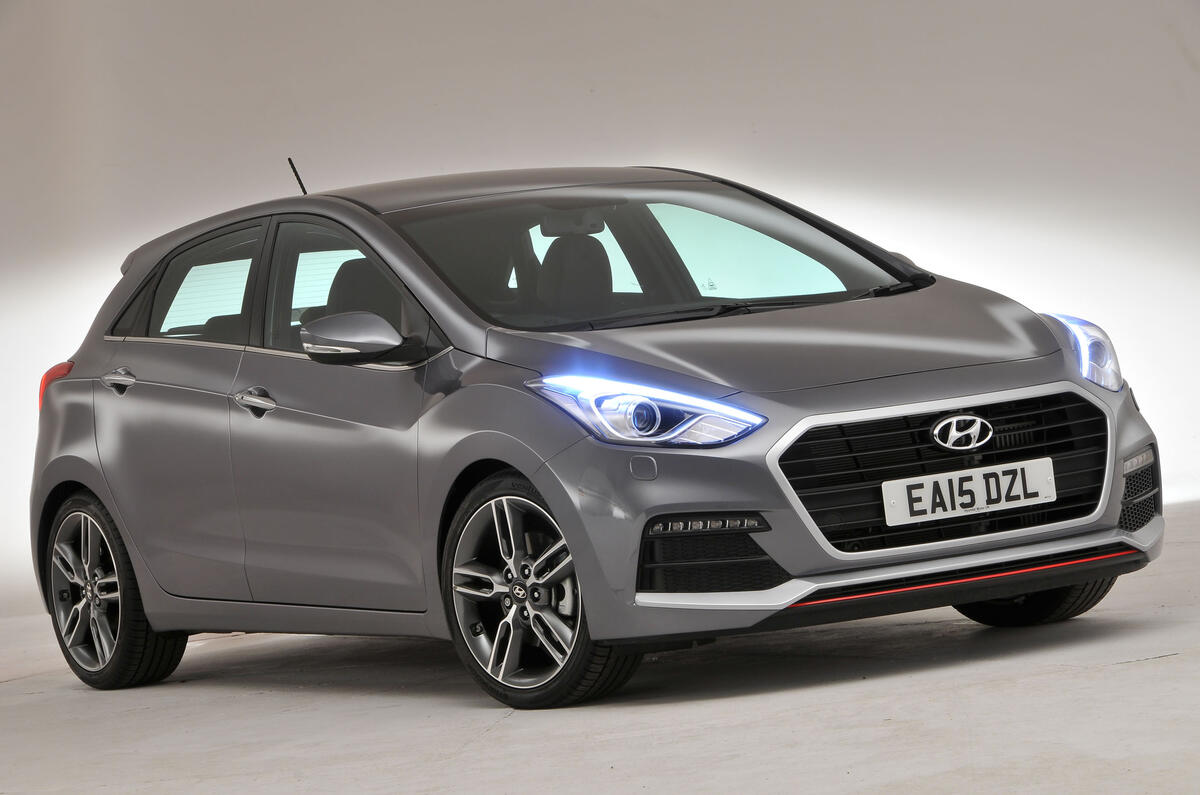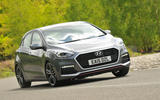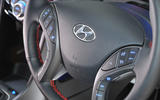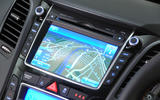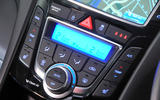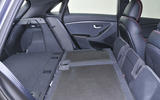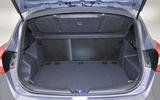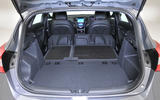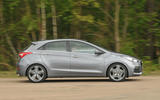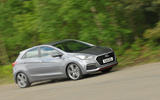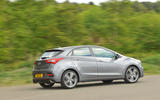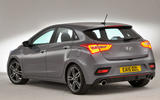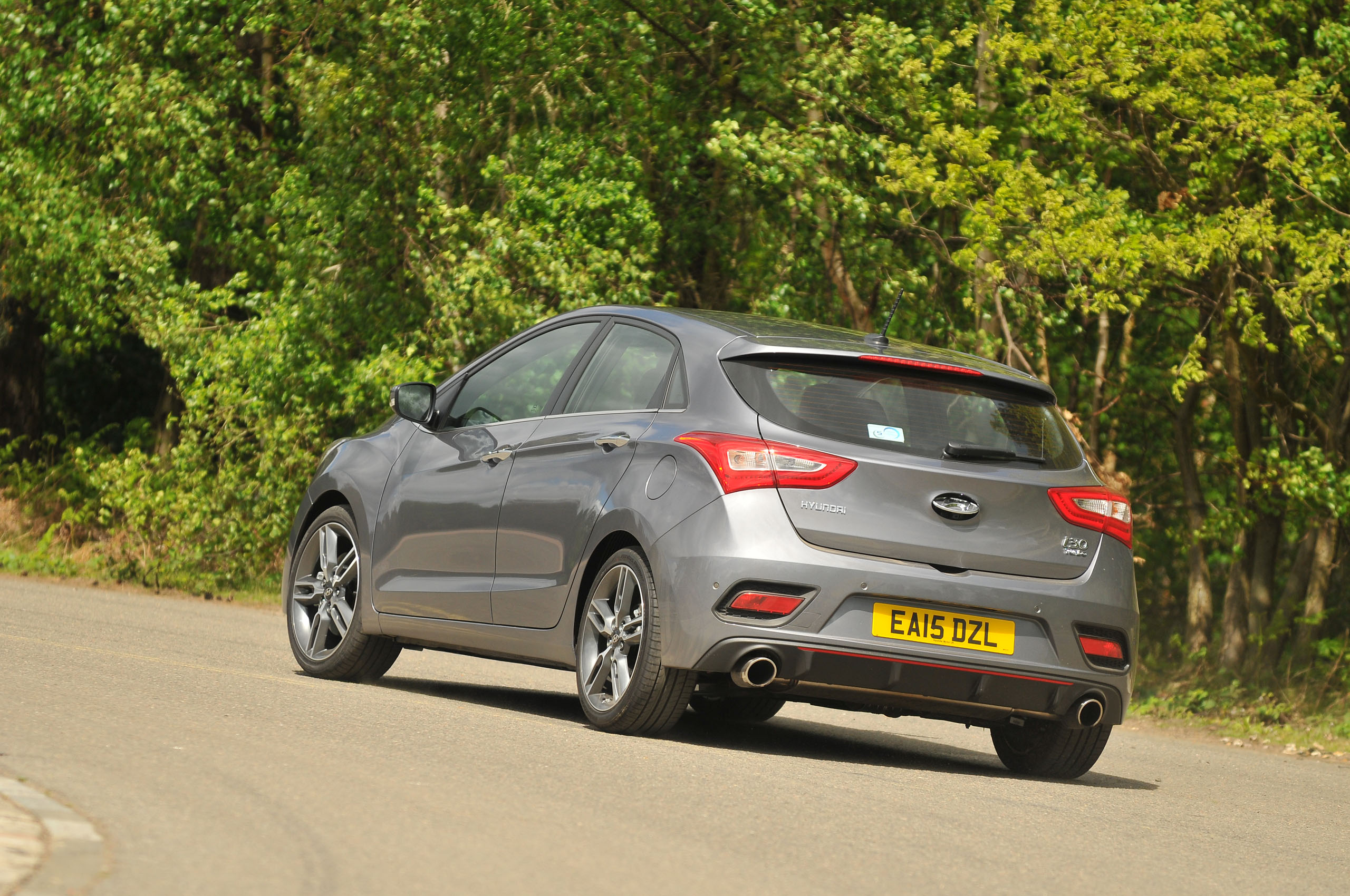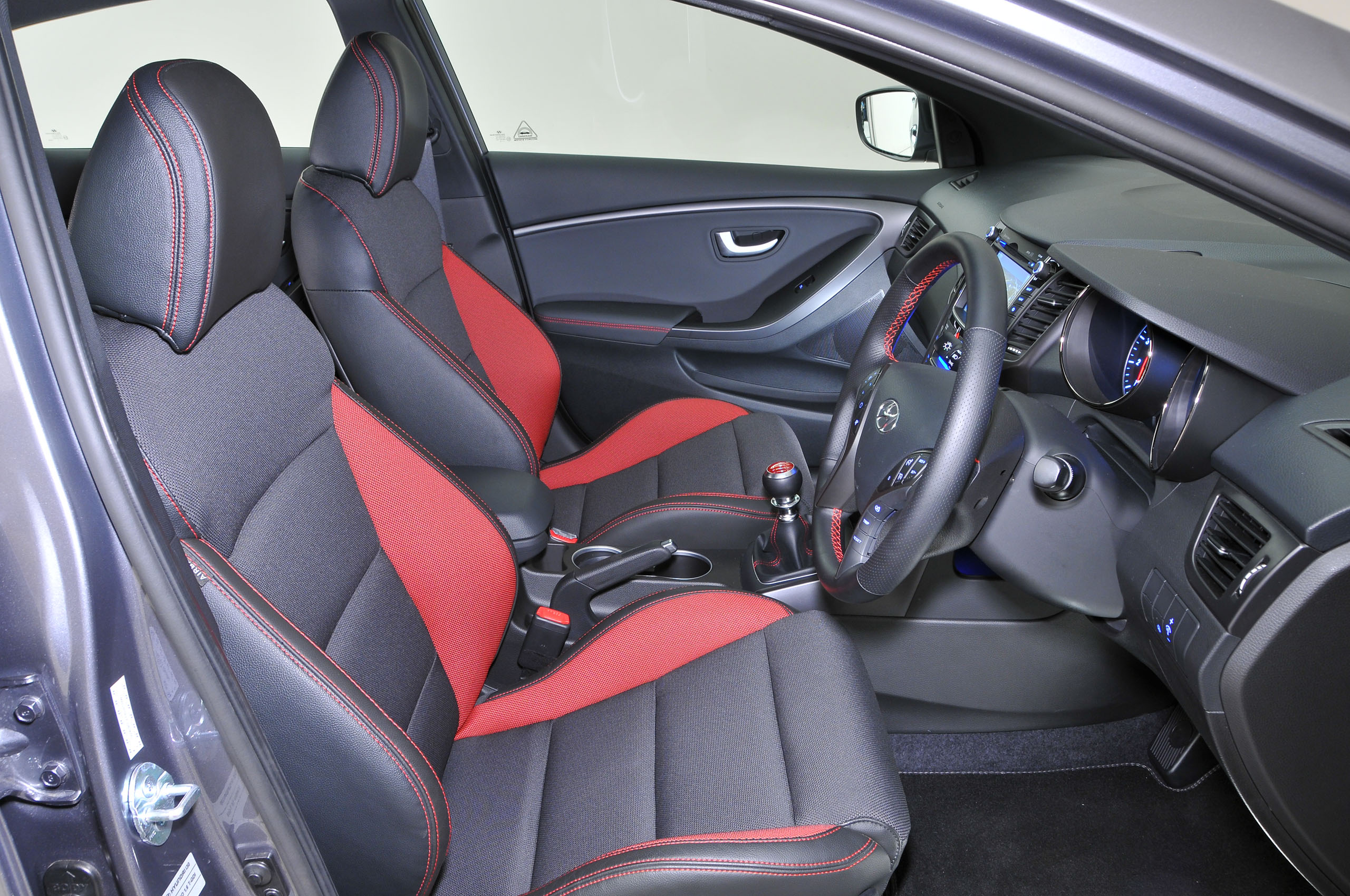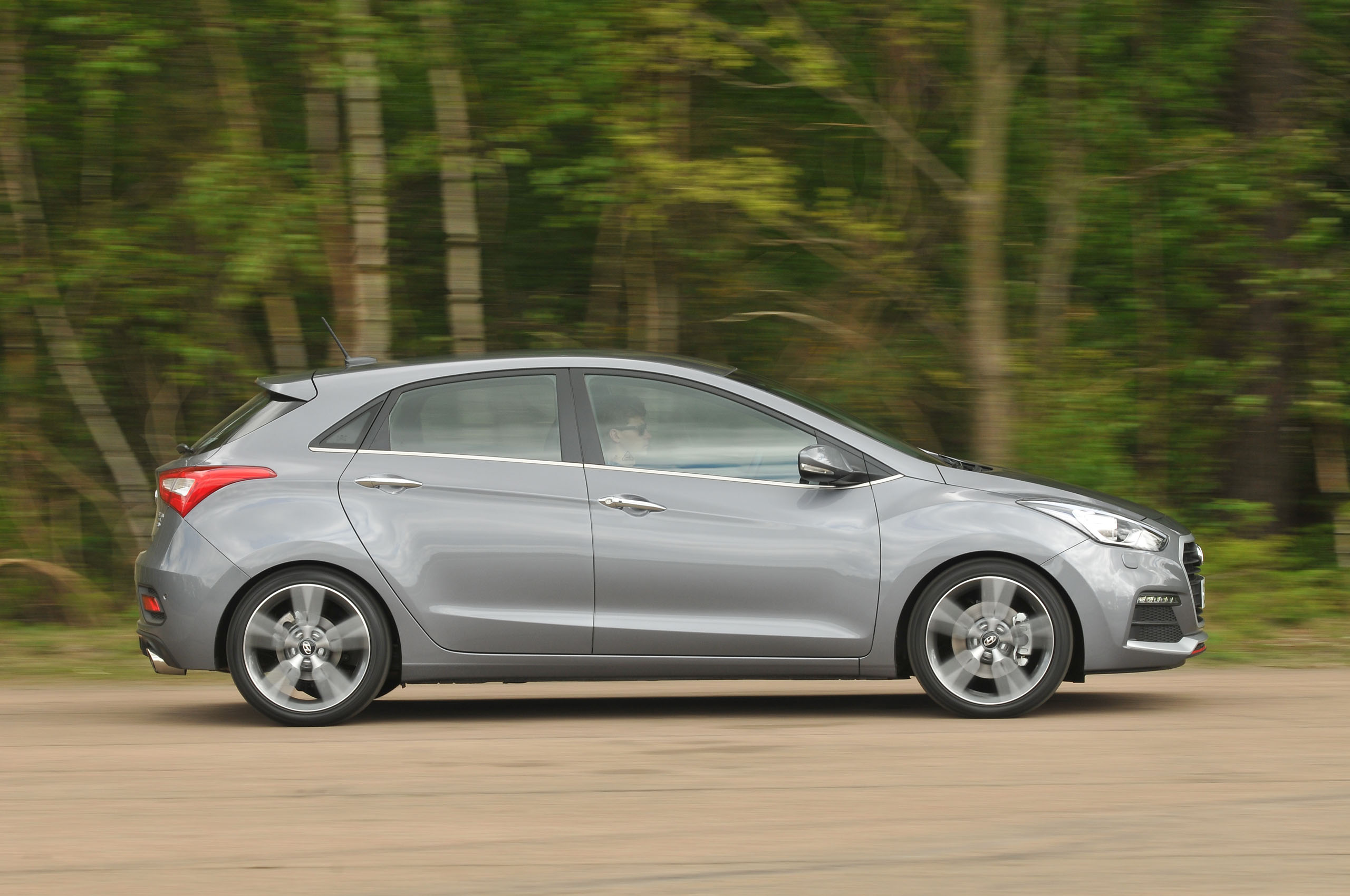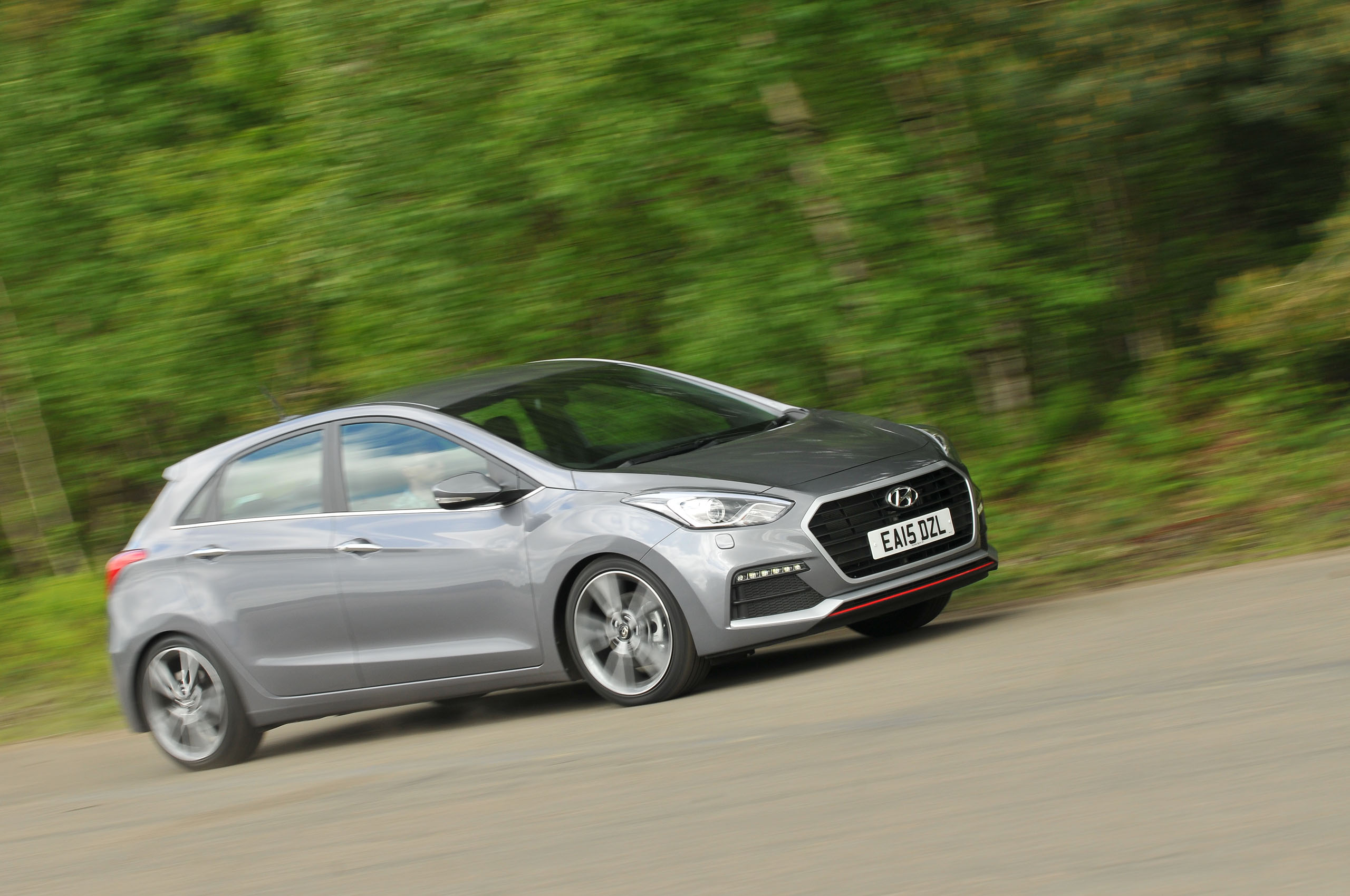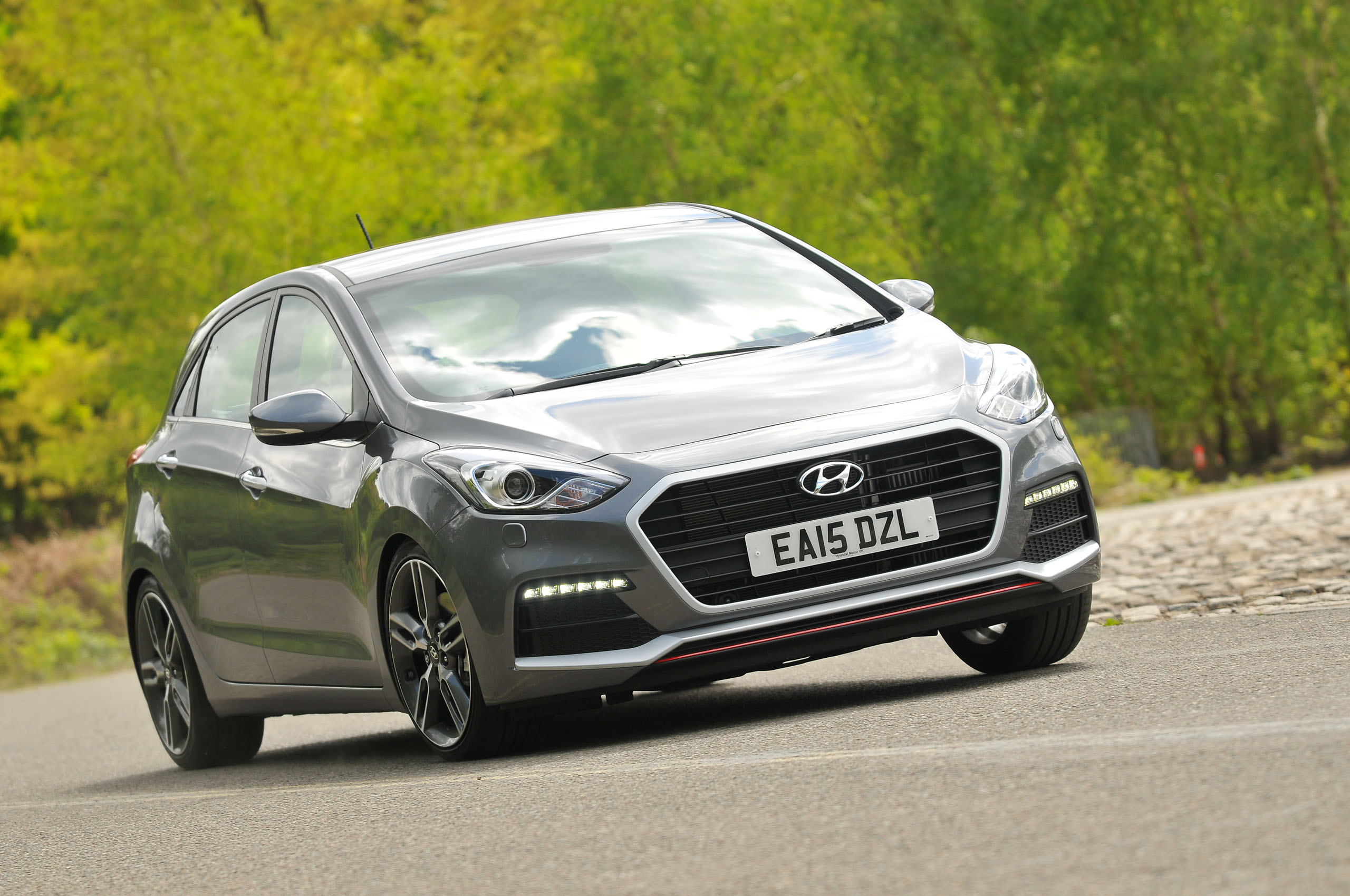The impulse that drives other car makers to futilely pursue a ‘premium’ aesthetic has seemingly never afflicted Hyundai. While it doesn’t duplicate Volkswagen’s class or Ford’s flair, there are no inconsistent finishes or faddish touches in the i30, intended to convince the occupants that they are seated in luxurious surroundings. Instead, the interior oozes the long-lasting practicality of a well made windcheater.
Clean-cut lines are backed by simple symmetry and neatly chosen fragments of metallic finish. The floating spines framing the centre console give the dashboard tone and definition, and draw the eye to a concise cliff face of logical buttons. The same trick is repeated on the steering wheel, and even the cupholders. In S trim, just the steering wheel and gearknob are treated to leather, but the soft-touch dash cladding has just the right mix of resilience and squish.
The ergonomics are decent, too, although we were disappointed to find ourselves having to reach forward to twiddle the stereo’s volume dial. Bluetooth and voice recognition come as standard, even on sub-£15k-spec models. We’ve had iPhone compatibility issues with Hyundai systems in the past, but our test vehicle worked well — although voice recognition is of limited use if you haven’t opted for the top spec Style Nav trim, which comes with a touchscreen sat-nav system and rear parking camera.
The standard audio system is more than adequate. It’s compatible with MP3 CDs, has aux-in and USB jacks, and integrates well with an iPod. But if it wants to be considered a semi-premium brand, Hyundai should offer an upgrade with DAB radio.
In the back, the tape measure revealed a healthy amount of leg and headroom comfortably comparable with our benchmarked Ford Focus, and a marginally bigger boot at 378 litres.
Hyundai says it has improved access across the seats by lowering the transmission tunnel by 79mm, but more solid gains have been made up front, where 30mm more headroom and 11mm more legroom contribute to an already gratifying cabin.
As we mentioned earlier, there are five trims to choose from - S, SE, SE Nav, Premium and Turbo. The entry-level S models get a poverty specification such as 15in steel wheels, air conditioning, front foglights, height and reach adjustable steering, Bluetooth connectivity and USB ports, while the SE trim includes luxuries such as 15in alloy wheels, loads of chrome trim, cruise control, electric windows, six-speaker audio system and rear parking sensors.
SE Nav sees the obvious addition of sat nav and with it a 7.0in touchscreen and a reversing camera. The range-topping Premium models get 17in alloys, electrically adjustable driver's seat, heated front seats, a leather upholstery, dual-zone climate control and keyless entry. While those after a Turbo i30 gets much the same as the Premium models but include a sportier bodykit, 18in alloy wheels and a dual-exhaust system.
The 2017 model is yet to have pricing or trim levels defined, however, we do know that the interior has been simplified with less switchgear featuring. The infotainment system's display has been increased to 8in and will include smartphone integration with the addition of Apple CarPlay and Android Auto. Other additions to be included to the range include a wireless charging mat and a seven-year subscription to TomTom Live as well.


